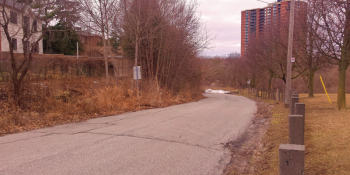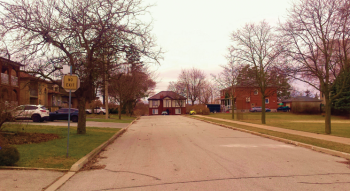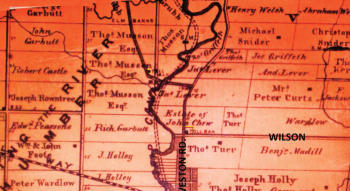
By Tim Lambrinos
There is a community near Weston and Wilson that many in Emery are probably familiar with. It’s an area known as Humberlea.
A small section of the community on the west side of Weston Road is much older than the east side. The west-side residences were initially built as cottages for residents reaching out from the Town of Weston and date back to the beginning of the 20th century.
The part of Albion Road that connects Weston Road to Islington was built in the mid 1800’s. It began as a toll road that would link a direct connection to the Town of Albion. The small section of its earliest roadway began at the intersection of Weston Road and what is now called Flindon Road. Flindon currently ends abruptly in a dead-end where a bridge once provided wagon passage over the Humber River.

The earliest extension of Albion Road was built as a result of inconveniences experienced by travelling on muddy roads in the 1800’s. The new roadway was needed to be more passable and less prone for wagons getting stuck. The concept for this new private road was conceived of in 1848 by The Albion Plank-Road Company. Partners in this company were Matthew, Thomas and Joseph Griffith (of Weston and Sheppard), John Chew (Weston and Wilson) and John Grubbe and Thomas Musson Esquire of Thistletown.
The men wanted to build a roadway that connected directly to Albion and Islington by crossing over the Humber River. The new road was built by using planks of wood from John Chew’s saw mill and the bridge became known as the Musson Bridge. Beginning in 1860, a toll booth was used to collect fees on the north-east corner of Weston and Wilson. Collected fees were used to pay for upkeep and maintenance of the road. After some time, it became apparent that the toll road was no more pleasing than any other plank road used at the time since horses’ hooves wore the planks out quite regularly.
Around the same time, James Lever was a farmer that operated along Weston Road near the Musson Bridge. In 1868, he established an Inn on the south-west corner of Flindon and Weston. Lever was a deeply religious man and it may have been his connections to the church in the Town of Weston that sparked the idea for a new housing development.

However by the late 1890’s, Thomas and James Griffith were operating adjacent farms to the north on the east side of Weston Road. Circumstances arose where they obtained additional farmland from the Estate of James Lever through Roger Lever. The Griffith brothers’ heritage originated from Ireland and their family roots had a longstanding tradition to the north in Grouse Hill and Emery. Rather than expand their own agricultural operations into the Lever farmland, the brothers decided to create a lodging development that included six new streets with small cottages. Based on the age and size of the houses, the proximity near the Humber River and the overall consistent dimensions of the streets, the development initially began as a cottage community that was started by the Griffith brothers at the turn of the century. Reinforcing this notion of these dwellings being cottages, the community was initially named Albion Park.
Another hint to the Griffith brothers’ connection to the Albion Park community is the street names. All had a connection to Ireland as well with names like Griffith, Reuben, Omagh, Lilac and Acacia.
During the 1930’s and 1940’s, the land south was an open field and parkland extending all the way to the Humber River. A large new elementary school was built in the 1930’s to the south called Humberview Public School. It stood on the west side of Weston Road very close to the eastbound off-ramp of Hwy 401 today. In 1947, post war homes were built over the Griffith farms and the Caufield dairy farm and a new school was needed. By 1950, Humberview Public School was bursting. Melody Road Public School was constructed in 1951 and the Humberview School was torn down with the expansion of Hwy 401 in the early 1950’s. 
For periods in North York’s history, cottage sprawl expanded into Humberlea as a first wave of growth. Times have evolved where business and industrial sprawl are now the first components of growth and expansion.
Today, many of the original cottages still exist on the former streets of Albion Park in the Humberlea community. But most have been replaced with single new homes. This unique section of Humberlea remains an intriguing component of North York’s history at a time when the expansion of cottage communities spread northerly to Weston and Sheppard in 1929 and finally to Islington and Steeles in 1932.
The Emery Village Voice would like to extend many thanks to Bryan Gordon for inspiration and assistance with this article.
He is planning a grand reunion for 2021 that will mark the 70th anniversary of Melody Road Public School for all former students that attended the school from 1951 to 1986.
For information about this reunion please contact Bryan Gordon at: bgordon1949@gmail.com
















